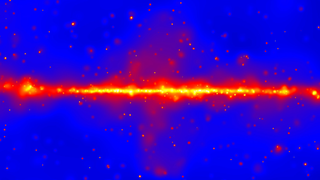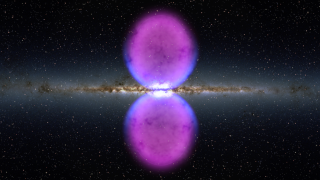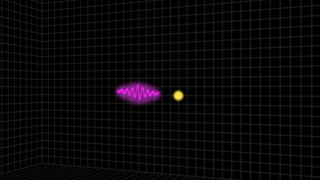Universe
ID: 12019
Major improvements to methods used to process observations from NASA's Fermi Gamma-ray Space Telescope have yielded an expanded, higher-quality set of data that allows astronomers to produce the most detailed census of the sky yet made at extreme energies. A new sky map reveals hundreds of these sources, including 12 that produce gamma rays with energies exceeding a trillion times the energy of visible light. The survey also discovered four dozen new sources that remain undetected at any other wavelength.
By carefully reexamining every gamma-ray and particle detection by the LAT since Fermi's 2008 launch, scientists improved their knowledge of the detector's response to each event and to the background environment in which it was measured. This enabled the Fermi team to find many gamma rays that previously had been missed while simultaneously improving the LAT's ability to determine the directions of incoming gamma rays. The improved data, known as Pass 8, effectively sharpens the LAT's view while also significantly widening its useful energy range.
Using 61,000 Pass 8 gamma rays collected over 80 months, Marco Ajello and his colleagues constructed a map of the entire sky at energies ranging from 50 billion (GeV) to 2 trillion electron volts (TeV). For comparison, the energy of visible light ranges from about 2 to 3 electron volts.
The Fermi team catalogued 360 individual gamma-ray sources, about 75 percent of which are blazars -- distant galaxies sporting jets powered by supermassive black holes. The highest-energy sources, which are all located within our galaxy, are mostly the remnants of supernova explosions and pulsar wind nebulae, places where rapidly rotating neutron stars accelerate particles to near the speed of light. A famous example, the Crab Nebula, tops the list of the highest-energy Fermi sources, producing a steady drizzle of gamma rays exceeding 1 TeV.
Astronomers think these very high-energy gamma rays are produced when lower-energy light collides with accelerated particles. This results in a small energy loss for the particle and a big gain for the light, transforming it into a gamma ray.
For the first time, Fermi data now extend to energies previously seen only by ground-based detectors. Because ground-based telescopes have much smaller fields of view than the LAT, which scans the whole sky every three hours, they have detected only about a quarter of the objects in the new catalog. This study provides ground facilities with more than 280 new targets for follow-up observations.
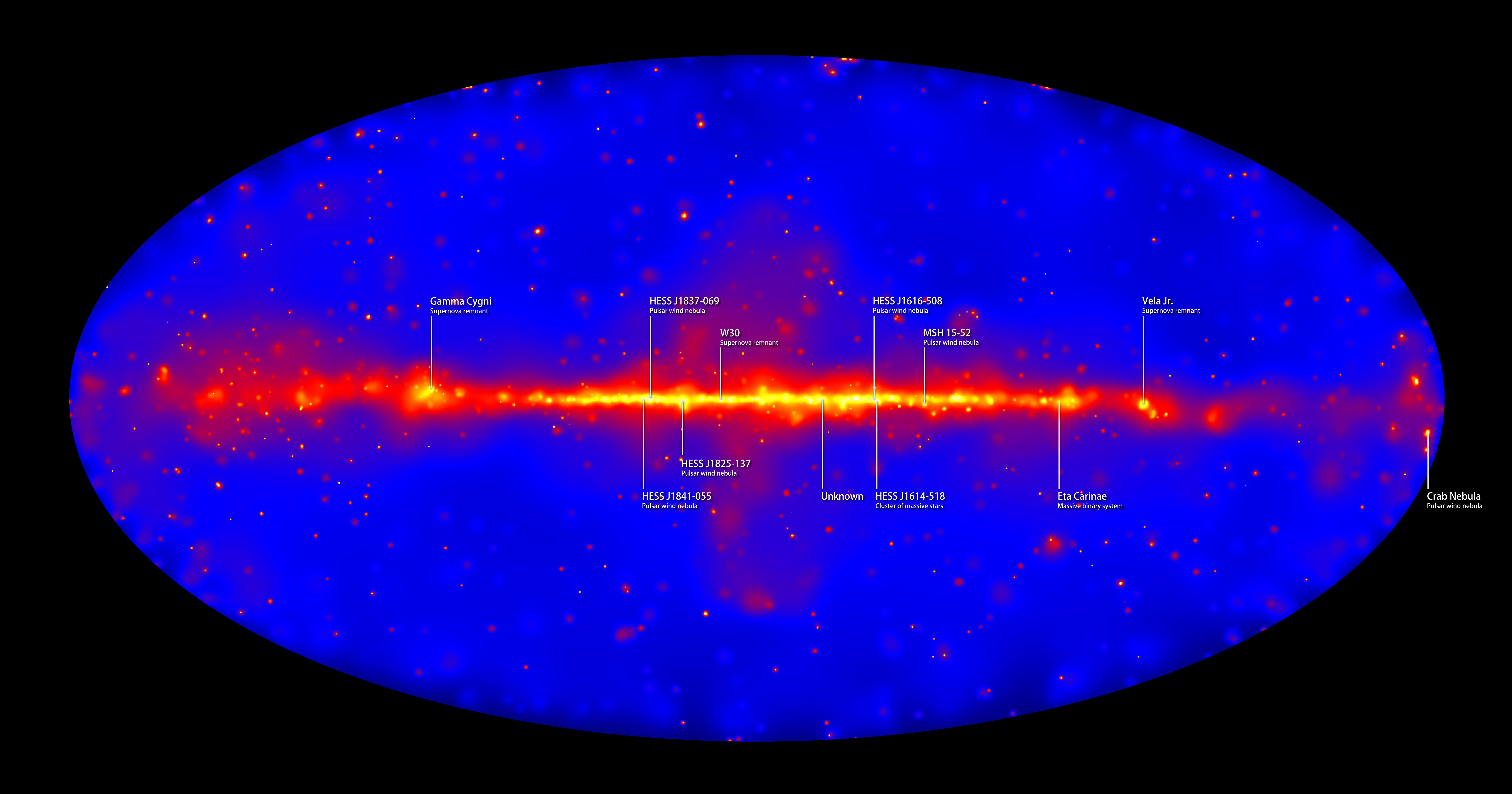

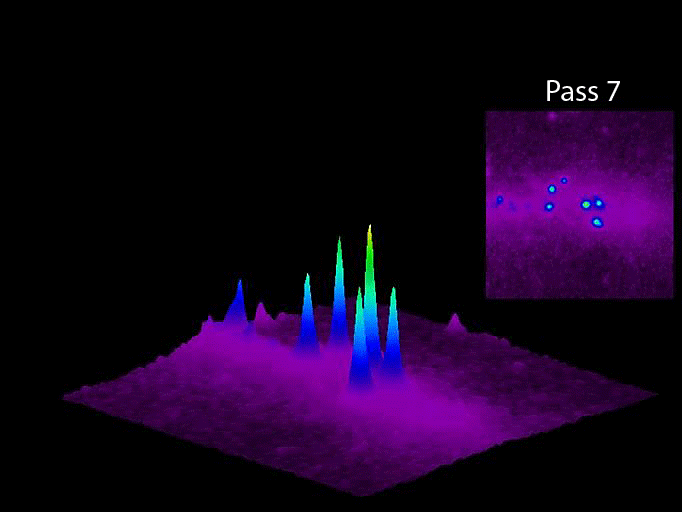
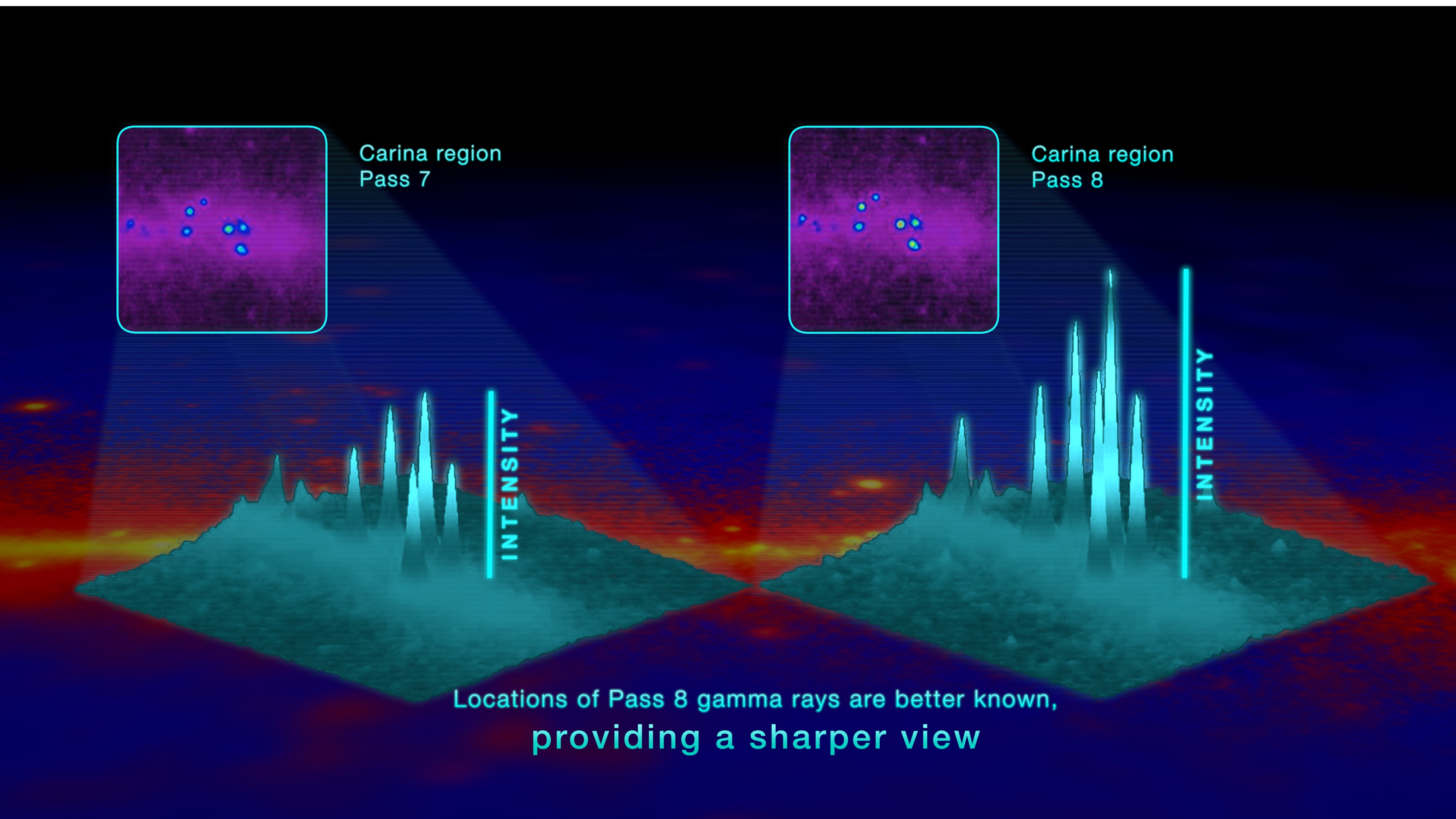
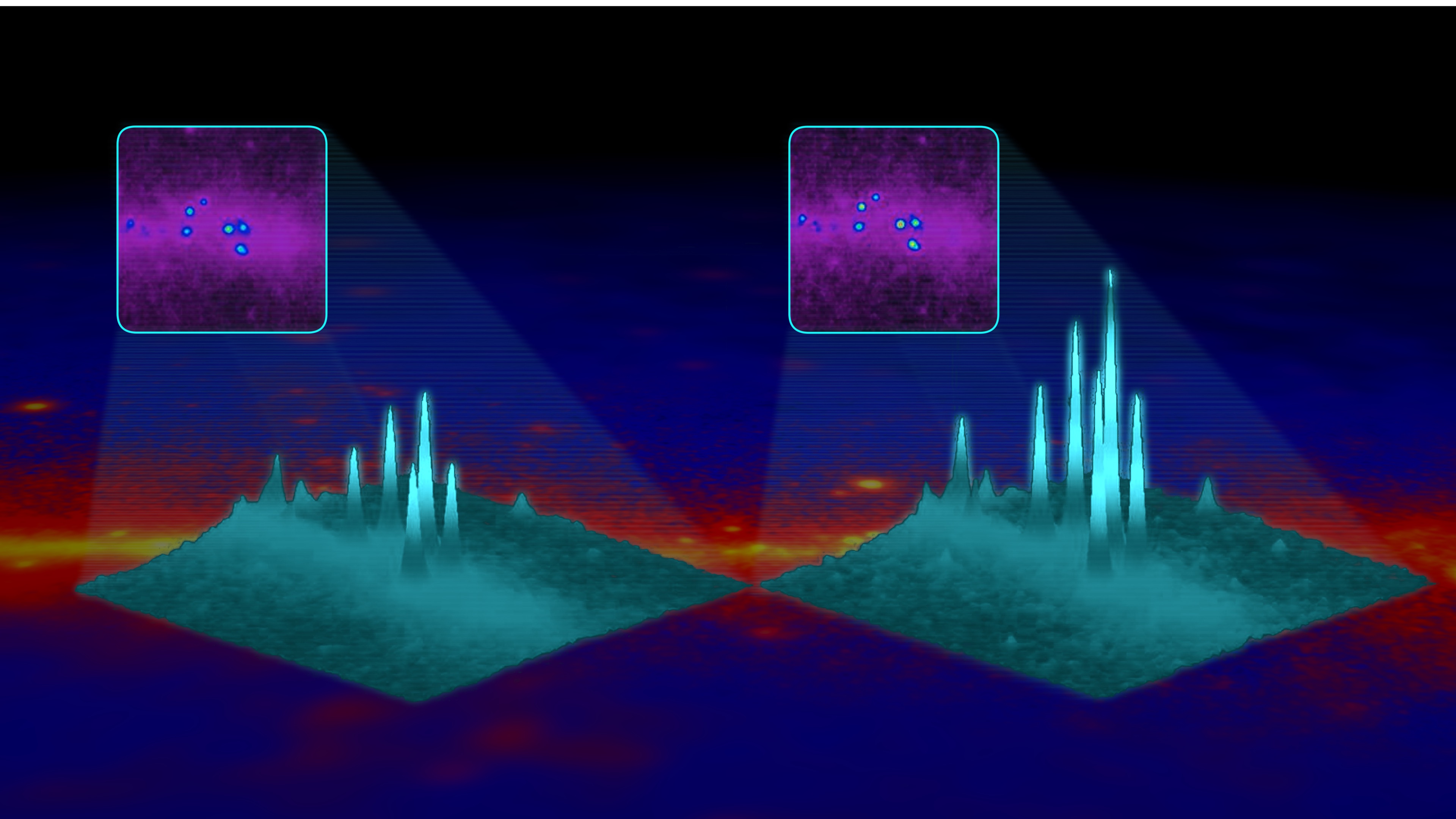
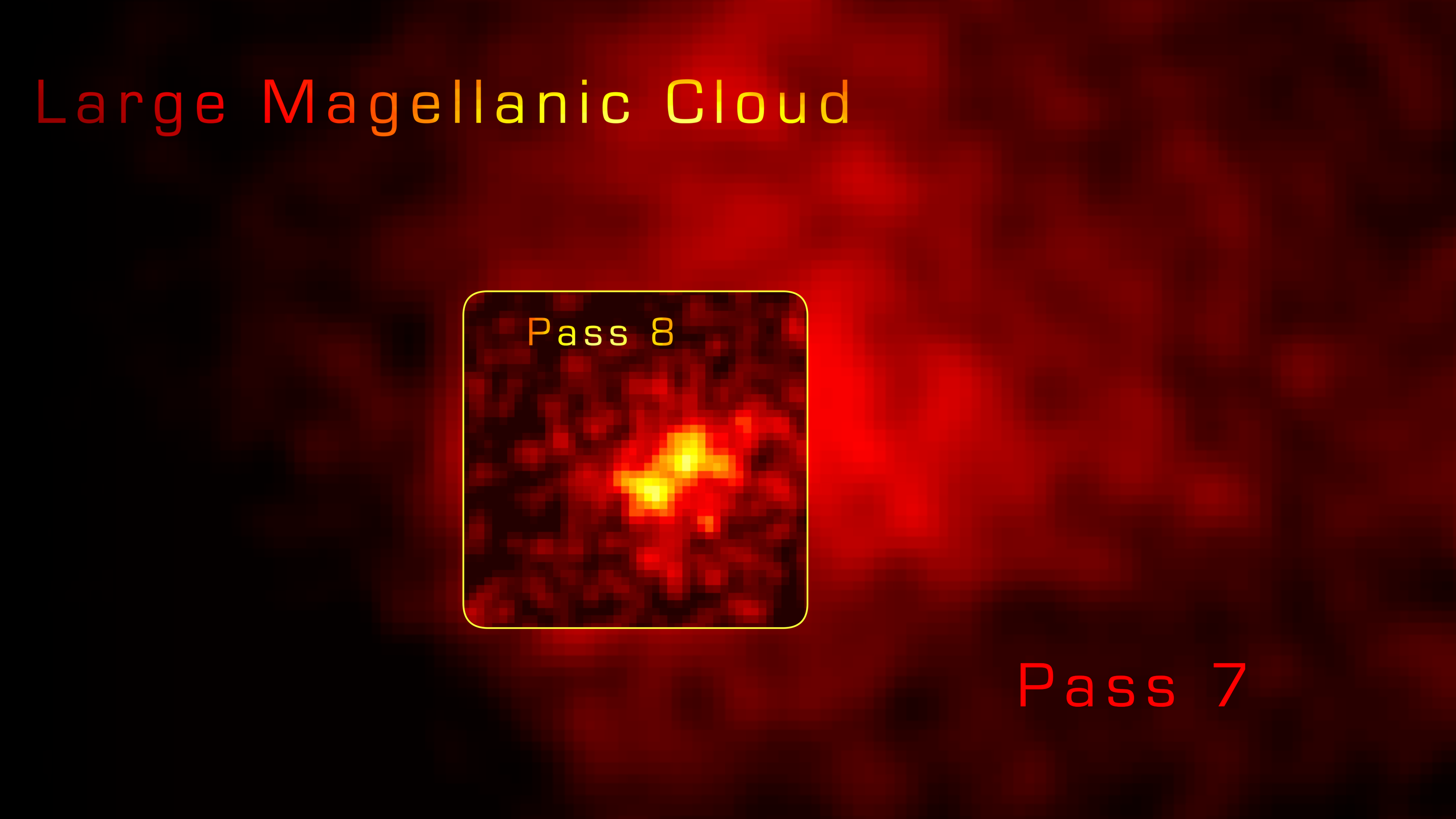
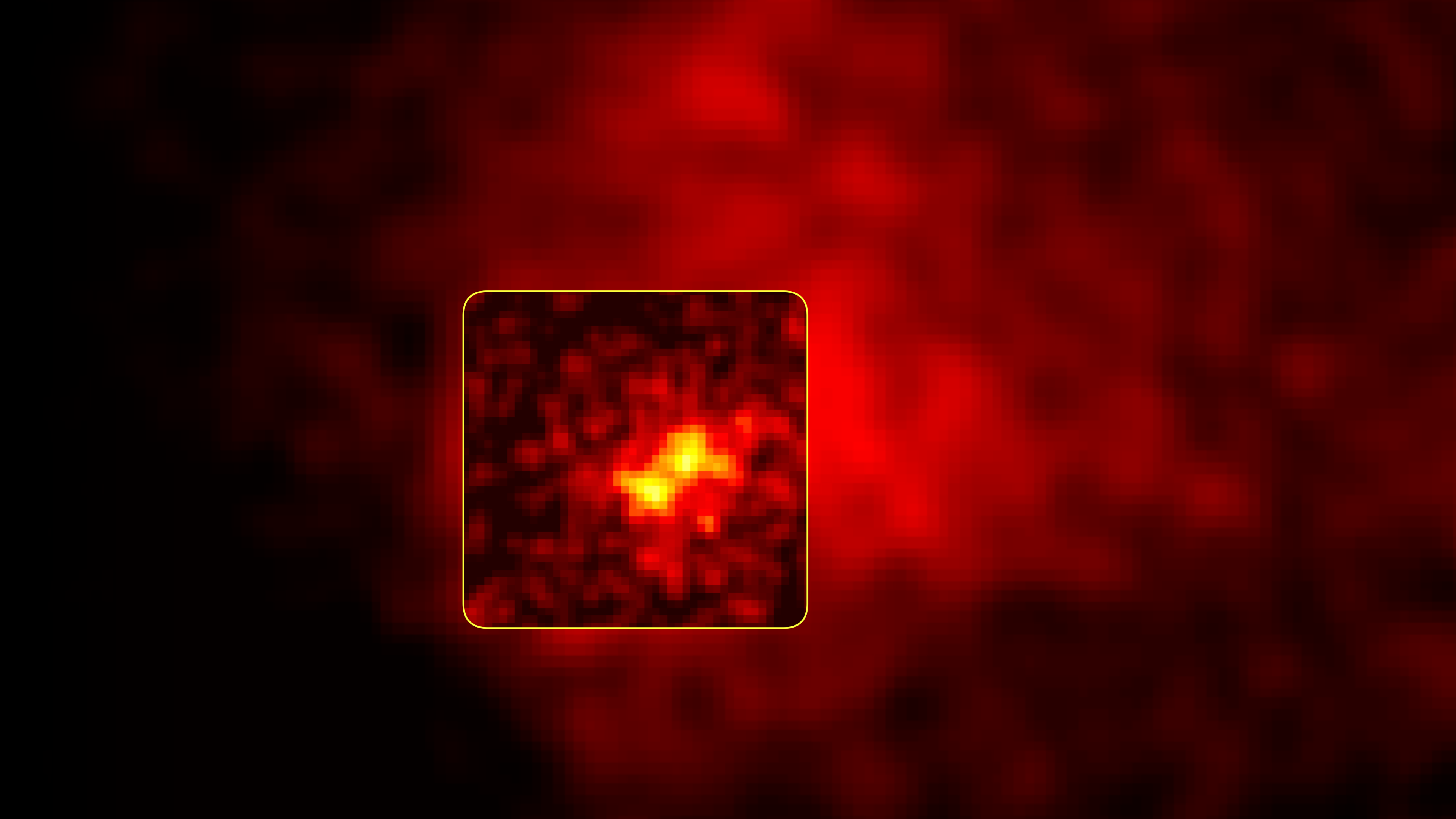

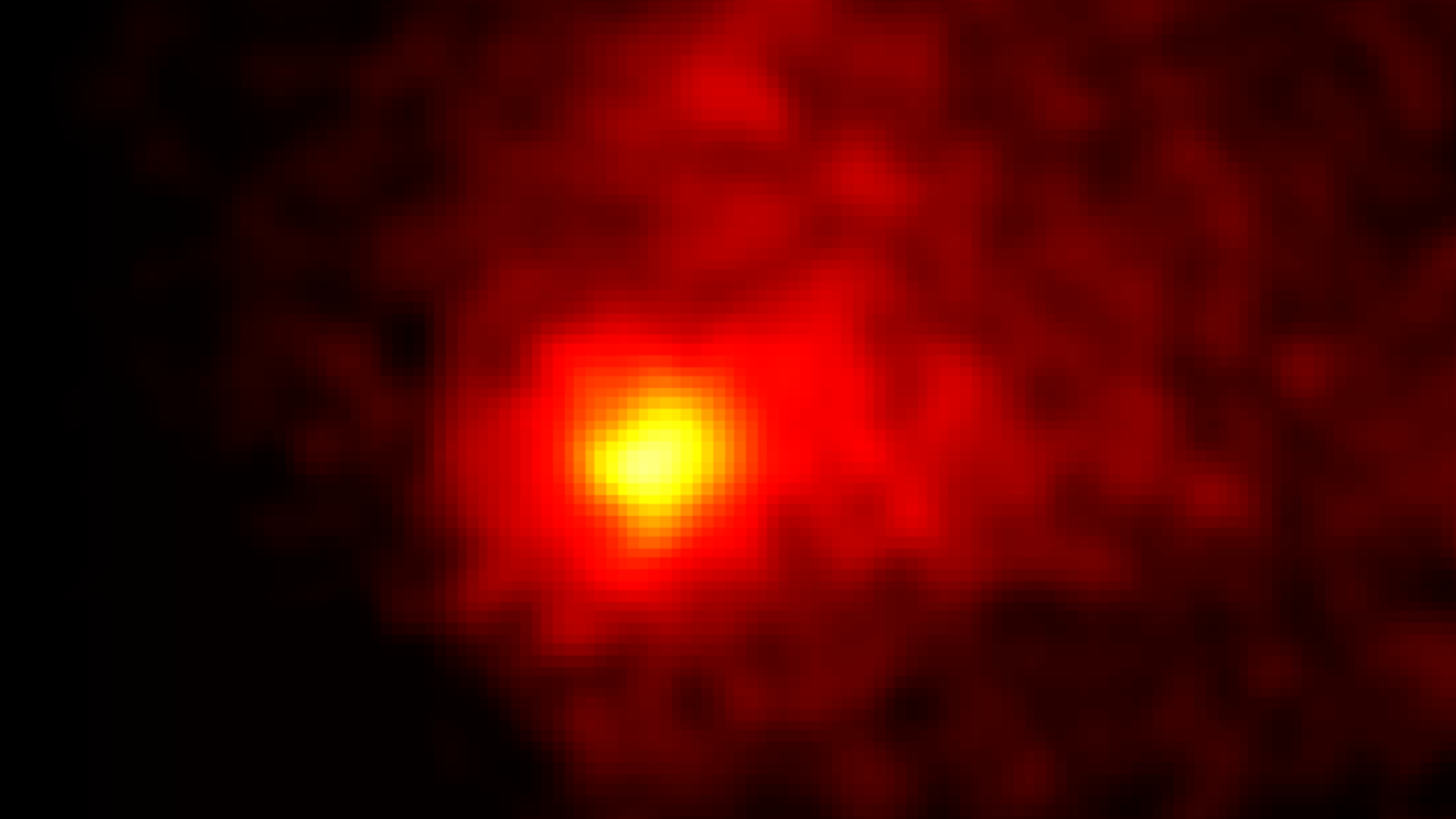
NASA's Fermi Mission Sharpens its High-energy View
By carefully reexamining every gamma-ray and particle detection by the LAT since Fermi's 2008 launch, scientists improved their knowledge of the detector's response to each event and to the background environment in which it was measured. This enabled the Fermi team to find many gamma rays that previously had been missed while simultaneously improving the LAT's ability to determine the directions of incoming gamma rays. The improved data, known as Pass 8, effectively sharpens the LAT's view while also significantly widening its useful energy range.
Using 61,000 Pass 8 gamma rays collected over 80 months, Marco Ajello and his colleagues constructed a map of the entire sky at energies ranging from 50 billion (GeV) to 2 trillion electron volts (TeV). For comparison, the energy of visible light ranges from about 2 to 3 electron volts.
The Fermi team catalogued 360 individual gamma-ray sources, about 75 percent of which are blazars -- distant galaxies sporting jets powered by supermassive black holes. The highest-energy sources, which are all located within our galaxy, are mostly the remnants of supernova explosions and pulsar wind nebulae, places where rapidly rotating neutron stars accelerate particles to near the speed of light. A famous example, the Crab Nebula, tops the list of the highest-energy Fermi sources, producing a steady drizzle of gamma rays exceeding 1 TeV.
Astronomers think these very high-energy gamma rays are produced when lower-energy light collides with accelerated particles. This results in a small energy loss for the particle and a big gain for the light, transforming it into a gamma ray.
For the first time, Fermi data now extend to energies previously seen only by ground-based detectors. Because ground-based telescopes have much smaller fields of view than the LAT, which scans the whole sky every three hours, they have detected only about a quarter of the objects in the new catalog. This study provides ground facilities with more than 280 new targets for follow-up observations.









Related
For More Information
Credits
Scott Wiessinger (USRA): Lead Producer
Francis Reddy (Syneren Technologies): Lead Science Writer
Chris Smith (Self): Producer
Walt Feimer (HTSI): Animator
Scott Wiessinger (USRA): Animator
Rob Andreoli (Advocates in Manpower Management, Inc.): Videographer
John Caldwell (Advocates in Manpower Management, Inc.): Videographer
Chris Smith (Self): Videographer
Scott Wiessinger (USRA): Lead Editor
Julie McEnery (NASA/GSFC): Interviewee
Philippe Bruel (LLR): Interviewee
Matthew Wood (SLAC): Interviewee
Francis Reddy (Syneren Technologies): Lead Science Writer
Chris Smith (Self): Producer
Walt Feimer (HTSI): Animator
Scott Wiessinger (USRA): Animator
Rob Andreoli (Advocates in Manpower Management, Inc.): Videographer
John Caldwell (Advocates in Manpower Management, Inc.): Videographer
Chris Smith (Self): Videographer
Scott Wiessinger (USRA): Lead Editor
Julie McEnery (NASA/GSFC): Interviewee
Philippe Bruel (LLR): Interviewee
Matthew Wood (SLAC): Interviewee
Please give credit for this item to:
NASA's Goddard Space Flight Center. However, individual items should be credited as indicated above.
NASA's Goddard Space Flight Center. However, individual items should be credited as indicated above.
Short URL to share this page:
https://svs.gsfc.nasa.gov/12019
Mission:
Fermi Gamma-ray Space Telescope
Data Used:
Note: While we identify the data sets used in these visualizations, we do not store any further details nor the data sets themselves on our site.
This item is part of these series:
Narrated Movies
Astrophysics Stills
Astrophysics Features
Goddard TV Tape:
G2015-083 -- Pass 8
Keywords:
SVS >> HDTV
SVS >> Music
GCMD >> Earth Science >> Spectral/Engineering >> Gamma Ray
SVS >> Hyperwall
SVS >> Astrophysics
SVS >> Pulsar
SVS >> Edited Feature
SVS >> Space
SVS >> Fermi
SVS >> Interview
SVS >> Blazar
NASA Science >> Universe
GCMD keywords can be found on the Internet with the following citation: Olsen, L.M., G. Major, K. Shein, J. Scialdone, S. Ritz, T. Stevens, M. Morahan, A. Aleman, R. Vogel, S. Leicester, H. Weir, M. Meaux, S. Grebas, C.Solomon, M. Holland, T. Northcutt, R. A. Restrepo, R. Bilodeau, 2013. NASA/Global Change Master Directory (GCMD) Earth Science Keywords. Version 8.0.0.0.0
https://svs.gsfc.nasa.gov/12019
Mission:
Fermi Gamma-ray Space Telescope
Data Used:
Fermi/LAT
Event List
Fermi Gamma-ray Large Area Space Telescope (GLAST) Large Area Telescope (LAT)
This item is part of these series:
Narrated Movies
Astrophysics Stills
Astrophysics Features
Goddard TV Tape:
G2015-083 -- Pass 8
Keywords:
SVS >> HDTV
SVS >> Music
GCMD >> Earth Science >> Spectral/Engineering >> Gamma Ray
SVS >> Hyperwall
SVS >> Astrophysics
SVS >> Pulsar
SVS >> Edited Feature
SVS >> Space
SVS >> Fermi
SVS >> Interview
SVS >> Blazar
NASA Science >> Universe
GCMD keywords can be found on the Internet with the following citation: Olsen, L.M., G. Major, K. Shein, J. Scialdone, S. Ritz, T. Stevens, M. Morahan, A. Aleman, R. Vogel, S. Leicester, H. Weir, M. Meaux, S. Grebas, C.Solomon, M. Holland, T. Northcutt, R. A. Restrepo, R. Bilodeau, 2013. NASA/Global Change Master Directory (GCMD) Earth Science Keywords. Version 8.0.0.0.0
